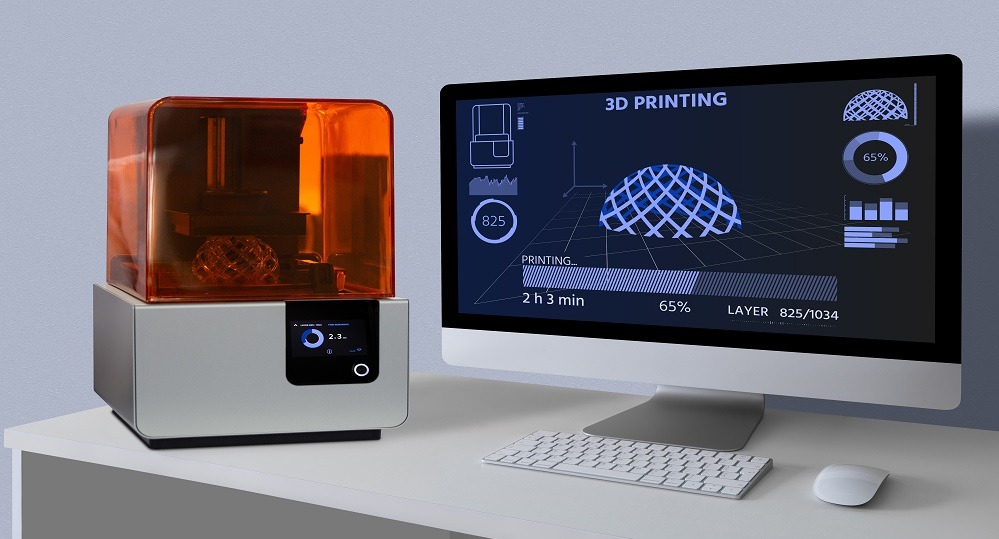Multi-Material Micro Additive Manufacturing with Micro Resolution
KEY INFORMATION
Materials - Metals & Alloys
TECHNOLOGY OVERVIEW
The rapid growth of the Internet of Things (IoT), 5G, and Artificial Intelligence (AI) is driving the miniaturization, integration, and diversification of electronic devices. Till date the fabrication of electronics parts is largely based on traditional methods which does not lead themselves well to the construction of 3D electronic structures. Printed electronics are largely based on non-functional printing technologies which are optimised for 2D printing. Despite the potential, current 3D printing technologies face challenges in material compatibility, resolution, and complexity, making it difficult to create intricate, multi-material electronic devices.
A novel approach using selective metal deposition (electroless deposition) combined with projection micro-stereolithography (PµSL) 3D printing offers a solution to address many of the challenges faced. This technology allows the creation of complex metal-plastic hybrid microstructures, potentially extending to other material combinations such as ceramic-metal, glass-metal, and semiconductor-metal hybrids, advancing the capabilities of 3D printed electronics. Besides, the 3D fabrication technique, the other core aspect of the solution included the know-how to formulate the special precursor materials that will allow metallic portions to be printed in-situ. These will combine to form hybrid structures that are functional thereby making it possible to create functional 3D parts.
The technology owner is seeking partners with complex applications that involved functional 3D parts to co-create and develop the new applications with them using this technology.
TECHNOLOGY FEATURES & SPECIFICATIONS
The technology platform features an innovative approach for creating micro-hybrid devices through multiphase and multi-material integration. The core of the additive manufacturing technique involved the combination of UV light-based projection micro-stereolithography (PµSL) combined with electroless deposition method. It employs active precursor materials, specifically an active polymer that induces selective metal deposition, acting as a bridge between plastic and metal. Key technical features include:
- Multiphase and Multi-Material Integration: Enables the fabrication of devices with diverse material properties (e.g., conductive, insulating, and structural) in a single manufacturing process.
- High-Resolution Accuracy: Achieves micron-level precision, essential for producing complex, next-generation electronic components.
- Multifunctional Material Compatibility: Supports a wide range of materials, including conductive metals, ceramics, and advanced polymers, allowing for the creation of multifunctional devices.
- Enhanced Design Flexibility: Overcomes traditional manufacturing limitations, enabling the creation of complex geometries and hybrid material designs tailored for specific electronic functions.
- Scalability and Customization: Facilitates rapid prototyping, scalable production, and customized solutions, particularly for niche applications.
- Largest work piece: 100mm x 100mm x 100mm
- Smallest resolution: 2.5um
POTENTIAL APPLICATIONS
Its potential applications include but are not limited to:
- Electronics Manufacturing
- 3D Electronics
- Intelligent Manufacturing for Robotics
- Medical Devices
- Semiconductor Manufacturing
- Automotive
- Energy Storage & Management
- Internet of Things (IoT) Devices
- Fast Fashion Jewellery & Accessories
Unique Value Proposition
The technology can revolutionize the production of electronic devices by seamlessly integrating metals and plastics into complex, high-resolution microstructures. This process combines multi-material 3D printing with in-situ metal deposition to provide unrivalled design flexibility, precision and efficiency. By overcoming traditional manufacturing constraints, this technology delivers highly customizable, functional components that can set a new benchmark in the production of advanced electronics.

